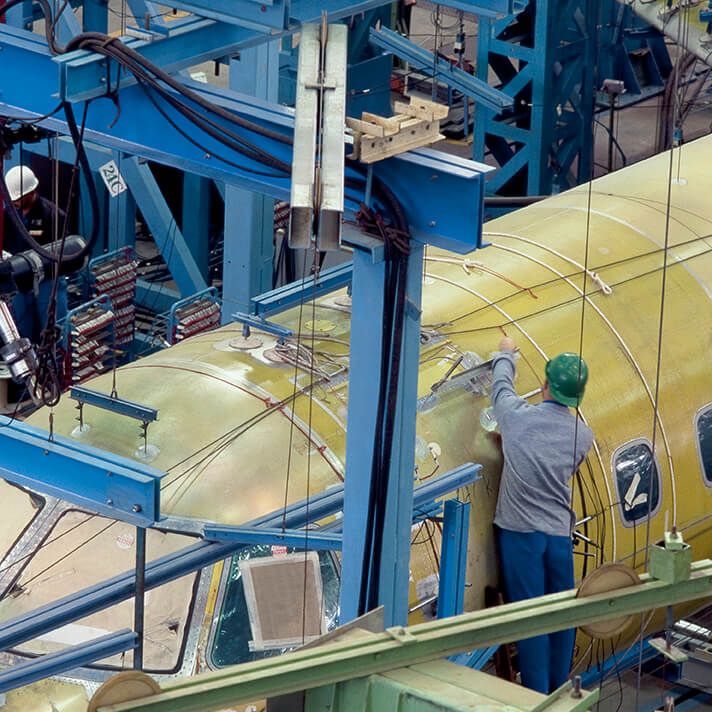Keep a lean focus during automation roll out to accelerate throughput, drive growth, and resolve business challenges faster.
For many long-time lean thinkers, automation is traditionally not a go-to-solution. They follow the mantra of creativity before capital and look for improvements they can make without investing in additional equipment or technology.
But times are changing. Challenges—especially around labor shortages and the struggle to find enough people to keep lines staffed—are tougher than they’ve ever been. And lean alone, in its conventional sense, can only go so far in boosting capacity and solving the problem.
Today, there are new technologies that digitize lean methods and improve efficiency. Many manufacturers are finding that they have to automate to survive and consistently meet customer demand. And that’s shifting the view of automation as a cost reduction method to automation as an essential investment in growth.
The good news is automation can and should be part of a next-generation lean strategy.
Thanks to advancements in both lean thinking and automation technology, the two concepts are no longer mutually exclusive. With the emergence of the Lean 4.0 philosophy, lean methods are leveraging technology to become more digitized and more effective. At the same time, lean is becoming more closely tied to connected machines, IIoT data, and—at least in our view—the enabling technologies that let you act on that data.
Automation is different today, too. It’s becoming increasingly affordable and readily available in bite-sized doses. That means it’s possible to implement automation pragmatically while leaning out the processes that surround and support it, thus increasing the value of the investment exponentially: You’re not just growing, you’re growing with less waste and more strategic intent, solving key business challenges in the process.
All of this has leaders rethinking their approach to automation in ways that will usher in fundamental shifts in the way next-generation lean facilities operate.
3 ways to marry Lean 4.0 and automation.
When you buy into the fact that automation can and should be lean, the opportunities will start to show up quickly. Three of the key areas where we regularly help clients get leaner and more automated are:
1. Operations and Processes. Connected machines are a primary tenet of Lean 4.0. The operational technology (OT) data and insights they deliver can point you to machines that may be in need of maintenance or in danger of breaking down. And they help you hone in on the nuanced inefficiencies and root causes of minor stoppages that are adding up to significant waste in your processes.
There are several solutions available today that can help you access and use the invaluable data that’s stored in your machines. For example, we work with clients that use Dploy Solutions Factory Floor Connectivity software to aggregate data from disparate systems and ensure that root causes of failures are easily identified. They can then go a step further and use the tools to ensure countermeasures are put in place and effectively executed. Essentially, the software enables a digital Plan, Do, Check, Act (PDCA) sequence that helps drive out the waste.
Often times, we find that automation can or should be part of the countermeasure solution. Because automation is now more widely available in small, flexible pieces of equipment or technology, solutions can often be quickly and relatively easily adopted and implemented to fix specific problems. In other words, companies don’t have to (and usually shouldn’t) invest in automating an entire line from end to end. Instead, they can put automation where there’s real value to be had and where it can improve quality and increase the throughput and capacity of existing machines, supporting top line growth.
For example, we work with a manufacturer that recently automated a riveting process that used to be done manually with the operator holding the case and the latch to be riveted, pressing a button, rotating the unit, and repeating the entire process seven more times. Now, the operator simply loads a machine, and all eight latches are riveted simultaneously, allowing the job to be completed faster and driving additional throughput.
These sorts of changes build upon themselves over time, ensuring that all machines on the shop floor ultimately perform to the best of their ability. And when each machine is capable of more quality output, it paves the way toward becoming a less asset-intensive, leaner business overall.
2. Talent. In some cases, automation can completely replace the non-value-added work currently being performed by human beings, freeing up those people for revenue generating work. They can start making more things or new things instead of moving them around, increasing your output.
One client recently introduced a small robot into an assembly line specifically to attach a vent to a case. Operators continue to work on either side of the robot. However, the person who used to attach the vents is now available to perform value-added work. When you can eliminate tedious tasks and move humans to more productive efforts, it often improves worker satisfaction and safety in addition to productivity.
Establishing a connected workforce by automating things like digital standard work, maintenance instructions, work orders, drawings, checks and audits, and performance boards improves productivity and efficiency, too. People process the information and learn faster, and they stay focused on the right work.
Consider the fact that as much as 80% of what you are still doing on paper can be automated, and that is a significant amount of time you stand to save by switching from paper documents to digital ones. The switch also frees up your trainers—often your best people on the line—so they, too, can stay focused on producing.
3. Supply Chain. Like talent shortages, supply chain disruptions are a leading cause of manufacturers’ headaches today and a problem that can seriously hamstring your business’ ability to produce and sell. While Lean 4.0 and automation aren’t going to magically turn up more semiconductors or other materials in short supply, they can certainly help you respond to the shortages in more efficient, productive, and profitable ways.
Again, data plays a key role in a connected supply chain . When you automate the ways in which you collect, access, and view data, you can make better decisions, faster, and you can work to mitigate the impact of supply constraints. Imagine a supply chain control tower that works a lot like the air traffic control towers that give the FAA a view of every plane in the sky. When you can see the status of every order, inbound and out, and view delays at ports as they develop, you can make real-time decisions that can help ensure your products arrive on-time.
Of course, automation can and should also play a starring role in warehouse management and transportation management systems, especially those that are continually leading to fulfillment problems.
The right technologies in these areas can help eliminate any waste while speeding up the process of getting goods into your customers’ hands.
Automation may be your most powerful lean tool yet.
The challenges manufacturers face today are more daunting than they have been in recent times. Addressing them effectively means leveraging every tool available. In some cases, this requires a paradigm shift and a broader view of traditional concepts like lean and automation. If you’re willing to take the leap, continue your commitment to lean, and embrace a next-generation Lean 4.0 approach, what you stand to gain in both performance and productivity is well worth the shift in mindset it will take to get there.





